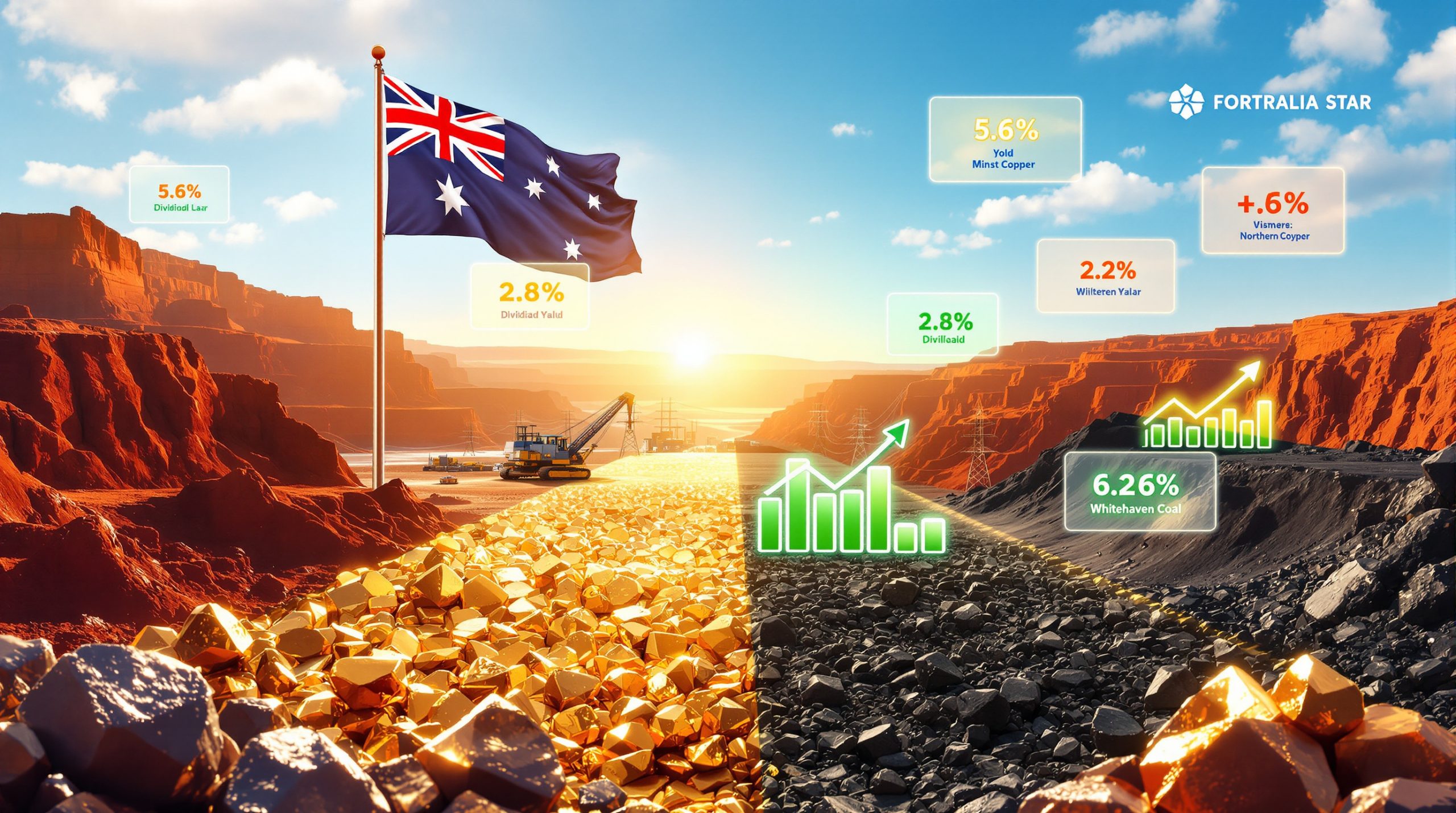The global copper market has entered an extraordinary phase, with a copper price surge climbing toward levels that could fundamentally alter the commodities landscape. Recent trading sessions have demonstrated unprecedented momentum as copper approaches critical psychological barriers, setting the stage for what industry experts describe as the beginning of a new supercycle.
Market dynamics have shifted dramatically, with copper prices reaching $11,000 per tonne before settling at $10,866.25 per tonne on major exchanges. This represents a substantial recovery from previous trading ranges and reflects growing institutional confidence in the metal's long-term trajectory. The current price action signals a fundamental departure from the balanced market conditions that characterised much of the previous period.
Key Price Milestones and Market Indicators
Recent price movements have captured global attention, with the London Metal Exchange recording significant volatility as copper tested new highs. Trading volumes have increased substantially, indicating heightened institutional participation and renewed interest from commodity funds that had previously reduced their exposure to base metals.
The psychological impact of approaching the previous record high of $11,400 per tonne, established in May 2024, has created additional momentum in the marketplace. Furthermore, technical analysts note that breaking through this resistance level could trigger additional buying from momentum-based trading strategies.
"Market participants have observed a fundamental shift in supply-demand dynamics, with structural deficits becoming increasingly apparent across global copper markets, creating conditions reminiscent of previous commodity supercycles."
Market fragmentation has become increasingly evident, particularly in North American trading venues. CME December futures contracts are trading approximately $500 per tonne above London Metal Exchange prices, reflecting regional supply constraints and the impact of copper stocks under tariffs on copper flows between markets.
How Supply Chain Disruptions Fuel Price Volatility
Mining operations worldwide face mounting challenges that directly impact copper availability and pricing mechanisms. The intersection of operational setbacks, declining ore grades, and extended development timelines has created a perfect storm of supply constraints that continue to ripple through global markets.
The complexity of modern mining operations has increased substantially, with projects requiring deeper excavation, more sophisticated processing techniques, and greater capital investment per tonne of production capacity. These factors combine to create inherent vulnerabilities in the supply chain that become magnified during periods of operational stress.
Impact of Mine Disruptions on Global Supply
Recent incidents at key mining facilities have highlighted the fragility of global copper supply forecast chains. The International Copper Study Group revised its 2025 production forecasts downward, reducing expected output growth from 2.3% to just 1.4% following major operational challenges at significant production facilities in Indonesia and the Democratic Republic of Congo.
The July 2025 tragedy at Chile's El Teniente mine, which resulted in six fatalities and temporary operations suspension, demonstrated how quickly supply disruptions can cascade through the global market. Such incidents not only impact immediate production but also trigger enhanced safety protocols that can reduce operational efficiency across the broader industry.
Table: Supply Disruption Impact Analysis
| Disruption Type | Production Impact | Market Response | Recovery Timeline |
|---|---|---|---|
| Operational accidents | 200,000 tonnes annually | Price spike of 8-12% | 3-6 months |
| Infrastructure failures | 150,000 tonnes annually | Sustained premium | 6-12 months |
| Regulatory delays | 300,000 tonnes annually | Long-term tightness | 12-24 months |
| Equipment breakdowns | 100,000 tonnes annually | Temporary volatility | 1-3 months |
Treatment Charges Signal Market Tightness
The copper concentrate market has experienced unprecedented conditions, with treatment charges entering negative territory for the first time in recent memory. This extraordinary situation indicates that smelters are effectively paying miners for raw materials, demonstrating the severity of supply constraints and the desperation of downstream processors to secure feedstock.
Fastmarkets assessed treatment charges at negative $66.60 per tonne, representing the eighth consecutive week of decline. This metric serves as a critical indicator of market tightness, with negative charges historically preceding significant price increases in the refined copper market.
The structural imbalance between smelter capacity growth of 8.5% and mine supply growth of only 2.8% has created conditions where processing facilities compete aggressively for available concentrate. However, this disparity reflects the shorter lead times required for smelter expansion compared to mine development, creating periodic mismatches between upstream and downstream capacity.
Why Experts Predict $20,000+ Copper Prices
Industry leaders are projecting unprecedented price levels based on multiple converging factors that extend beyond typical supply-demand fundamentals. These projections incorporate both immediate market tightness and longer-term structural changes in the global economy that suggest sustained demand growth.
The convergence of declining ore grades, extended mine development timelines, and accelerating demand from electrification creates a scenario where traditional supply responses may prove inadequate. Consequently, this dynamic has led several prominent market participants to revise their copper price prediction forecasts substantially upward.
Historical Price Ratio Analysis
When copper prices are adjusted for gold's exceptional performance, reaching above $4,000 per troy ounce for the first time, a compelling valuation argument emerges. Historical analysis of the copper-to-gold ratio indicates that copper prices appear significantly undervalued relative to precious metals performance.
Based on long-term average copper-gold ratios and current precious metals pricing, theoretical copper prices could reach $22,000 per tonne to maintain historical parity. This represents one of the lowest relative copper valuations since 1975, suggesting substantial upside potential if historical relationships reassert themselves.
The precious metals rally has provided unexpected relief to copper smelters struggling with negative treatment charges, as gold and silver recovery from copper concentrate processing generates additional revenue streams that help offset operational challenges.
Supply-Demand Imbalance Projections
Market forecasters anticipate a dramatic shift from the current refined copper surplus of approximately 178,000 tonnes in 2025 to a deficit of 150,000 tonnes by 2026. This transition reflects constrained concentrate availability that will limit refined production growth despite adequate processing capacity.
World refined copper production growth is projected at 3.4% in 2025, declining sharply to just 0.9% in 2026 as concentrate availability becomes the limiting factor. Primary electrolytic refined production growth will face particular constraints due to feedstock limitations.
Key Price Drivers:
- Declining ore grades at existing mining operations
- Extended development timelines for new copper projects
- Increased capital requirements for mining operations
- Regulatory complexity in permitting processes
- Infrastructure limitations in remote mining locations
- Labour market constraints in skilled mining positions
- Environmental compliance costs and operational restrictions
What Role Does Electrification Play in Copper Demand?
The global transition toward electrification represents the most significant long-term demand driver for copper in modern history. This transformation spans multiple sectors and geographic regions, creating sustained consumption growth that traditional supply responses struggle to accommodate.
Electrification levels are projected to increase from 32% to 50% of the global energy mix within the next decade, representing an unprecedented rate of change in energy infrastructure. For instance, this shift requires substantial copper inputs for transmission networks, charging infrastructure, and renewable energy systems.
Grid Infrastructure Investment Surge
Renewable energy infrastructure development demands substantial copper quantities for transmission and distribution systems. Grid modernisation projects require extensive conductor materials, with copper remaining the preferred choice due to its superior electrical conductivity properties.
China's grid spending has increased by 17% year-over-year, driven by the need to integrate renewable energy sources and modernise transmission networks. This investment pattern is being replicated across developed markets as countries pursue energy transition objectives and grid reliability improvements.
The development of smart grid technologies adds another layer of copper demand, requiring sophisticated monitoring and control systems that rely heavily on copper-intensive electronic components. These systems enable better integration of renewable energy sources but require extensive copper infrastructure.
Nuclear Power Renaissance Impact
Nuclear power development represents a significant but often overlooked copper consumption driver. China alone has 32 nuclear reactors under construction, each requiring thousands of tonnes of copper for electrical systems, cooling circuits, and control mechanisms.
The nuclear industry's copper intensity exceeds that of conventional power generation due to the complex safety and control systems required. In addition, emergency backup systems, redundant electrical circuits, and specialised cooling systems all contribute to higher per-megawatt copper consumption compared to fossil fuel alternatives.
"Energy transition analysts estimate that nuclear power facilities require approximately 4-5 tonnes of copper per megawatt of installed capacity, significantly exceeding the copper intensity of conventional power generation technologies."
How Defence Spending Influences Copper Markets
Military and defence applications have emerged as an unexpected but increasingly significant source of copper demand growth. Advanced electronics systems, communication networks, and defence infrastructure require substantial quantities of high-grade copper materials.
The evolution toward more technologically sophisticated military systems has increased the copper intensity of defence applications substantially. Modern military vehicles, communication systems, and electronic warfare capabilities rely heavily on copper-based components and infrastructure.
Defence Sector Consumption Patterns
European defence spending analysis reveals that copper accounts for approximately 8% of total metal consumption in defence applications. This percentage continues to increase as military systems become more electronically sophisticated and dependent on advanced communication technologies.
Defence spending targets as a percentage of gross domestic product are increasing across multiple regions, driven by geopolitical tensions and modernisation requirements. The copper-intensive nature of advanced military electronics means that defence budget increases translate directly into copper demand growth.
Table: Defence Copper Applications
| Application Category | Copper Intensity | Annual Growth Rate | Strategic Importance |
|---|---|---|---|
| Electronics systems | High | 15% annually | Critical |
| Communication networks | Medium-High | 12% annually | Essential |
| Vehicle systems | Medium | 8% annually | Important |
| Infrastructure projects | Low-Medium | 5% annually | Supportive |
The shift toward electronic warfare capabilities and advanced radar systems represents a particularly copper-intensive aspect of military modernisation. These systems require extensive copper wiring, heat dissipation systems, and electromagnetic shielding that create sustained demand growth.
What Challenges Face New Copper Mine Development?
The mining industry confronts unprecedented obstacles in bringing new copper production online. These challenges extend far beyond traditional operational concerns, encompassing regulatory, environmental, and financial factors that significantly constrain supply growth.
Modern copper mining projects face a complex web of requirements that extend development timelines and increase capital costs substantially. The combination of these factors creates a structural impediment to supply growth that supports higher long-term copper prices.
Capital Cost Escalation Trends
Mining project development has experienced extraordinary cost overruns, with recent analysis showing average increases of 65% above initial budgets. This trend reflects increased project complexity, enhanced safety requirements, and infrastructure development challenges in remote locations.
The Chilean state mining company Codelco provides a stark example of cost escalation challenges. Initial structural project investments planned at $11 billion ultimately required $21 billion due to increased complexity, uncertainty, and changing operational requirements.
Labour market constraints have contributed significantly to cost increases, with skilled mining professionals commanding premium wages and experienced project managers becoming increasingly scarce. The specialised nature of modern mining operations requires expertise that is not easily replaceable or rapidly scalable.
Timeline Extension Reality
Modern copper mine development requires an average of 17 years from discovery to commercial production. This extended timeline reflects permitting complexity, environmental impact assessments, community engagement requirements, and infrastructure development needs.
The breakdown of development phases reveals significant time allocations:
- Exploration and resource definition: 3-5 years
- Environmental and social impact studies: 2-4 years
- Permitting and regulatory approval: 3-6 years
- Infrastructure development and construction: 4-6 years
- Commissioning and ramp-up: 1-2 years
Regulatory requirements have become increasingly complex, with environmental assessments often requiring multiple iterations and extensive stakeholder consultation. Climate change considerations now factor into project evaluations, adding additional layers of analysis and approval requirements.
"The mining industry requires nearly $5 trillion in investment over the next decade to meet projected copper demand growth, representing one of the largest infrastructure challenges in modern industrial history."
How China's Market Dynamics Affect Global Prices
China's dominant position as the world's largest copper consumer creates significant influence over global pricing patterns. Representing approximately 58% of world refined copper consumption, Chinese demand patterns and economic performance critically impact market dynamics and price formation.
The relationship between Chinese economic activity and copper consumption remains strong, though structural changes in the economy are gradually altering consumption patterns. Infrastructure development, manufacturing activity, and urbanisation continue to drive substantial copper requirements.
Chinese Consumption Patterns
Chinese copper usage is projected to increase by 3.3% in 2025, though growth is expected to moderate to 1% in 2026. This deceleration reflects economic maturation, efficiency improvements in copper-intensive industries, and shifts toward service-sector economic activity.
The composition of Chinese copper demand has evolved substantially, with renewable energy infrastructure and electric vehicle manufacturing becoming increasingly important consumption drivers. Traditional construction and manufacturing sectors continue to dominate but represent a declining share of total demand.
Quality requirements for Chinese copper consumption have increased, with manufacturers demanding higher-grade materials for advanced applications. This trend supports premium pricing for high-quality copper products and creates additional market segmentation.
Infrastructure Investment Impact
Continued urbanisation and infrastructure development maintain strong fundamental demand for copper in China. Grid modernisation projects, renewable energy installations, and transportation infrastructure development represent significant ongoing consumption drivers.
The construction of 32 nuclear reactors represents a substantial copper demand source, with each facility requiring extensive electrical infrastructure and cooling systems. These projects create concentrated demand that can significantly impact regional copper markets.
High-speed rail development and urban transportation systems require substantial copper inputs for electrical systems, signalling infrastructure, and power distribution. These projects typically involve long-term contracts that provide demand stability but reduce market flexibility.
What Risks Could Derail the Copper Price Surge?
Despite overwhelmingly bullish projections, several factors could potentially moderate the copper price surge or delay projected supply deficits. Understanding these risks provides important context for evaluating the sustainability of current price trends.
Historical precedent suggests that commodity markets can experience rapid demand shifts due to technological innovations or economic disruptions. The copper market's complexity creates multiple potential failure points that could alter the current supply-demand narrative.
Substitution Technology Developments
While copper's unique electrical conductivity properties make substitution challenging in most applications, technological innovations could reduce consumption intensity in specific sectors. However, industry experts generally consider copper irreplaceable in critical electrical applications.
The nickel market provides a cautionary example of how rapidly demand patterns can change. Expectations for surging nickel demand in electric vehicle batteries were undermined by the rapid adoption of lithium iron phosphate battery technology in China, which now accounts for 80% of light vehicle applications.
Aluminium substitution in certain electrical applications remains theoretically possible, though practical limitations around conductivity and weight typically favour copper in critical applications. Research into advanced conductor materials continues but has not yet produced commercially viable copper alternatives.
Economic Slowdown Scenarios
Global economic conditions significantly influence copper demand, particularly in construction and manufacturing sectors. Economic uncertainty or recession could moderate consumption growth and delay projected supply deficits substantially.
Manufacturing activity slowdowns typically translate directly into reduced copper demand due to the metal's extensive use in industrial applications. Furthermore, supply chain disruptions or trade tensions could complicate demand patterns and create temporary oversupply situations.
"Market analysts caution that rapid technological changes, as demonstrated in the nickel market with battery chemistry evolution, could create unexpected demand patterns that challenge current consumption projections."
Currency fluctuations and monetary policy changes could impact commodity prices broadly, with copper particularly sensitive to US dollar strength and Chinese economic policy decisions. Interest rate environments affect both mining project financing and speculative position-taking in commodity markets.
When Will Copper Reach Peak Prices?
Timing predictions for copper price peaks depend on multiple variables, including supply response capabilities, demand growth sustainability, and macroeconomic conditions. The interplay between these factors creates significant uncertainty around specific price timing forecasts.
Historical supercycles provide some guidance, though each cycle reflects unique circumstances that limit the applicability of past patterns. Current conditions suggest several factors that could support extended periods of elevated pricing.
Short-Term Price Trajectory
Near-term price movements will likely be influenced by resolution of current supply disruptions and inventory level adjustments. Market tightness indicators suggest continued price support through 2025, though volatility should be expected as supply chain issues are gradually resolved.
Seasonal demand patterns typically strengthen copper prices during the first quarter as manufacturing activity increases following holiday periods. Chinese New Year demand patterns and spring construction season preparations create predictable consumption increases.
Technical analysis suggests that sustained trading above $11,000 per tonne could trigger additional momentum-based buying from commodity funds and algorithmic trading systems. Conversely, failure to maintain these levels could precipitate profit-taking and position liquidation.
Long-Term Supercycle Potential
Industry experts increasingly suggest that copper may be entering a multi-year supercycle driven by structural demand growth and constrained supply responses. This scenario could support elevated prices for an extended period, potentially lasting through the end of the decade.
Supercycle characteristics include sustained periods where demand growth consistently exceeds supply expansion capabilities. The combination of electrification demand, constrained mine development, and declining ore grades creates conditions supportive of extended price strength.
Table: Price Scenario Analysis
| Scenario | 2025 Price Range | 2026-2027 Outlook | Primary Drivers |
|---|---|---|---|
| Conservative | $9,000-$12,000 | Gradual increase | Supply recovery, demand moderation |
| Moderate | $12,000-$16,000 | Sustained growth | Balanced fundamentals |
| Bullish | $16,000-$22,000 | Supercycle peak | Supply crisis, accelerated demand |
| Extreme Bull | $20,000-$25,000 | Peak pricing | Multiple disruptions, panic buying |
Investment implications vary significantly across these scenarios, with copper investment strategies requiring careful consideration of probability-weighted outcomes rather than single-point forecasts.
Market Psychology and Investment Considerations
The psychological aspects of commodity markets play crucial roles in price formation, particularly during periods of perceived scarcity or abundance. Current market sentiment reflects renewed confidence in copper's fundamental prospects following an extended period of uncertainty.
Institutional investors have begun repositioning portfolios toward commodity exposure, viewing copper as a key beneficiary of global electrification trends. This institutional interest provides additional demand support beyond industrial consumption patterns.
Speculative Interest and Fund Flows
Commodity fund participation has increased substantially as copper prices approached record levels. Managed money positions in copper futures markets have expanded, creating additional upward pressure on prices during periods of positive momentum.
Exchange-traded fund launches focused on copper and electrification themes have created new investment vehicles that provide retail investor access to copper price exposure. These funds represent incremental demand that operates independently of industrial consumption patterns.
Risk management considerations have become increasingly important as price volatility increases. Industrial consumers are extending hedging horizons and diversifying supplier relationships to manage exposure to potential supply disruptions.
US Investment Landscape
American investors are increasingly recognising copper's strategic importance, particularly given the country's infrastructure modernisation needs and defence requirements. US copper project insights reveal growing interest in domestic production capabilities to reduce import dependence.
The development of domestic copper mining projects faces similar challenges to global operations but benefits from established regulatory frameworks and advanced infrastructure. However, environmental permitting processes remain complex and time-consuming.
US defence spending priorities increasingly emphasise supply chain security, creating potential policy support for domestic copper production initiatives. This trend could influence investment flows toward North American copper projects.
Geological Factors and Resource Quality
The global copper resource base faces fundamental challenges that extend beyond cyclical supply-demand imbalances. Declining ore grades, increasing depth requirements, and resource depletion at mature mining operations create structural constraints on supply growth.
Average copper ore grades have declined consistently over recent decades, requiring increased processing volumes to maintain production levels. This trend increases energy consumption, processing costs, and environmental impact per unit of copper production.
Resource Depletion and Exploration Challenges
Exploration success rates for new copper deposits have declined as easily accessible, high-grade deposits become increasingly scarce. New discoveries typically involve lower grades, more complex metallurgy, or challenging geographic locations that increase development costs and timelines.
The concentration of copper resources in specific geographic regions creates additional supply chain vulnerabilities. Political stability, infrastructure availability, and regulatory frameworks in these regions significantly influence global copper supply reliability.
Mining operations are increasingly moving underground as surface deposits become exhausted, requiring more sophisticated extraction techniques and higher capital investment per tonne of production capacity. Underground operations typically involve higher operating costs and increased safety complexities.
Conclusion: Positioning for Market Transformation
The convergence of supply constraints, demand acceleration, and structural economic changes positions copper for potentially dramatic price appreciation over the medium term. While specific timing remains uncertain, the fundamental drivers supporting higher prices appear increasingly robust and self-reinforcing.
Current market conditions reflect a unique combination of factors that historically precede extended periods of commodity strength. The intersection of electrification demand growth, mining industry challenges, and geopolitical considerations creates a compelling case for sustained copper price surge elevation.
Key Market Insights:
- Supply disruptions and declining ore grades fundamentally constrain production growth capabilities
- Electrification trends and defence spending create sustained, structural demand increases
- Historical price relationships suggest significant upside potential remains unexploited
- Investment requirements for new mining capacity support long-term price strength
- Market psychology has shifted toward recognition of copper's strategic importance
Investment Considerations:
- Portfolio diversification benefits from copper exposure during economic transition periods
- Risk management strategies should account for continued price volatility
- Long-term positioning may benefit from copper's structural demand drivers
- Supply chain considerations favour companies with secure feedstock access
- Technology developments could alter demand patterns but currently support copper usage
The copper market transformation represents more than a typical commodity cycle. It reflects fundamental changes in global energy systems, defence priorities, and industrial processes that suggest sustained demand growth. Supply responses face unprecedented challenges that may prove inadequate to meet projected consumption increases, supporting the case for extended price strength and potential supercycle development.
Market participants should prepare for continued volatility while recognising that underlying fundamentals support higher price levels than have been sustained historically. The intersection of immediate supply constraints and long-term demand drivers creates compelling conditions for copper price appreciation that may persist well into the next decade.
Ready to Capitalise on the Copper Price Surge?
Discovery Alert's proprietary Discovery IQ model delivers instant notifications on significant ASX copper discoveries, empowering subscribers to identify actionable opportunities as market dynamics shift toward unprecedented price levels. Begin your 30-day free trial today to position yourself ahead of the copper supercycle and discover why historic mineral discoveries can generate substantial market returns by exploring our dedicated discoveries page.




